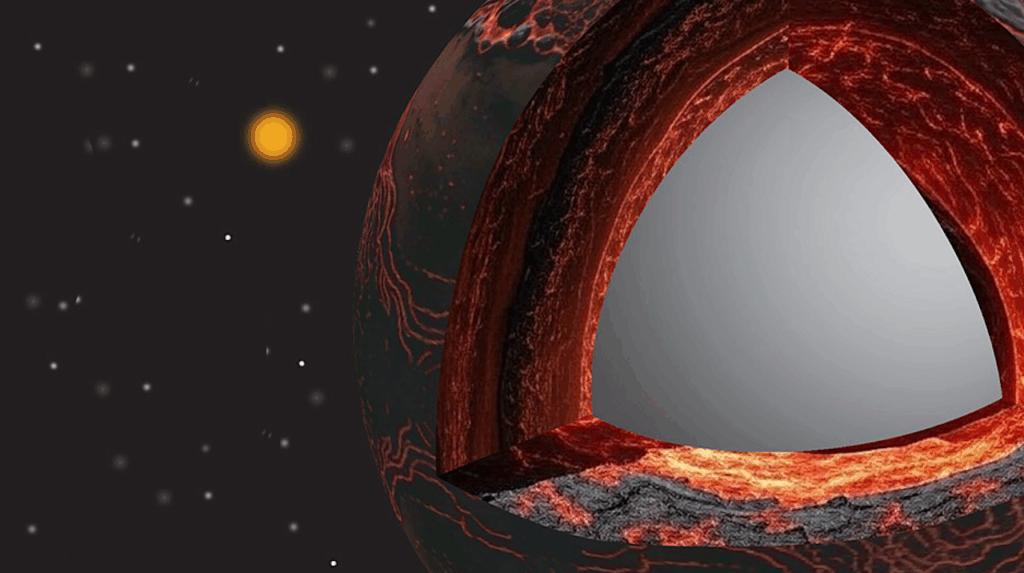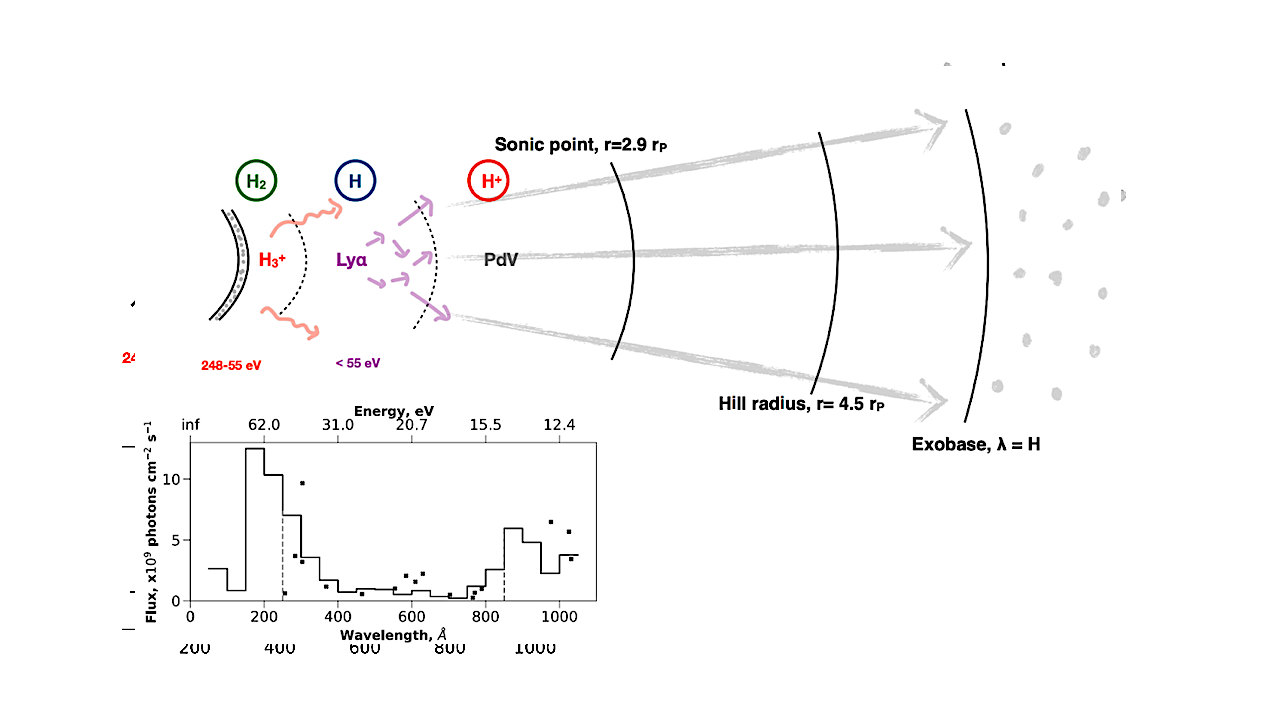Now Reading: Planetary Habitability Under The Light Of A Rapidly Changing Star
-
01
Planetary Habitability Under The Light Of A Rapidly Changing Star
Planetary Habitability Under The Light Of A Rapidly Changing Star
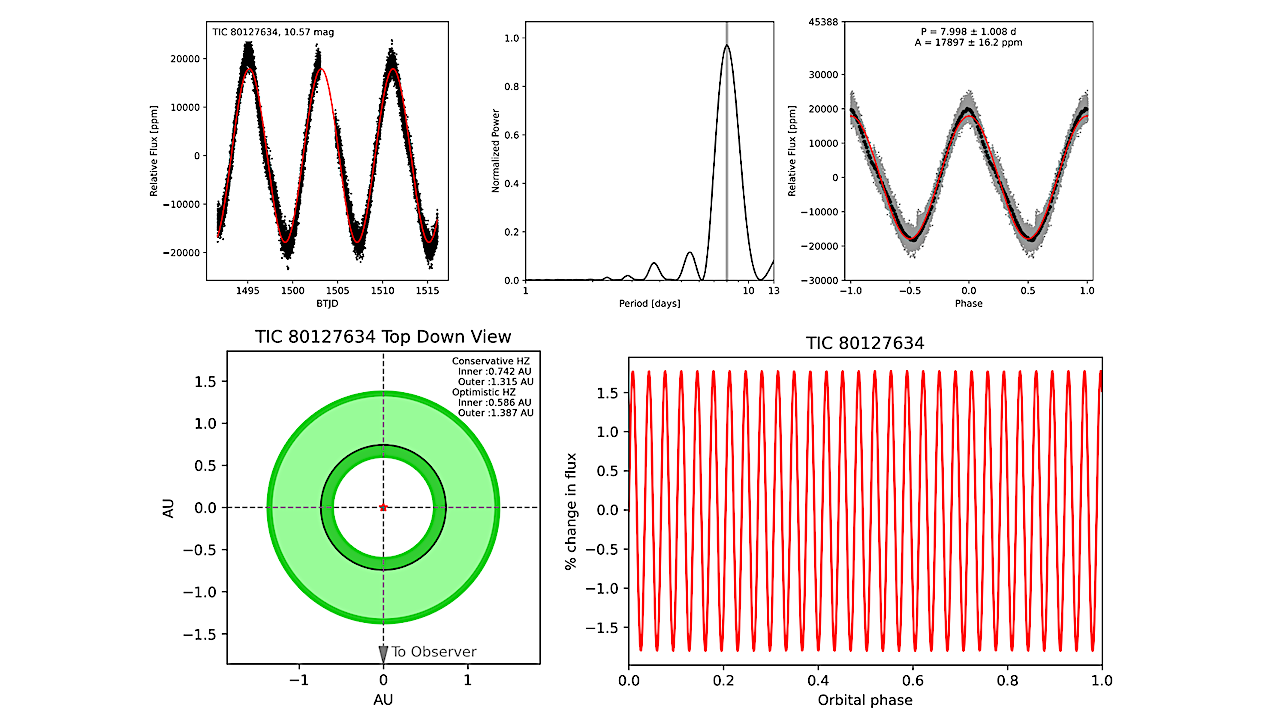
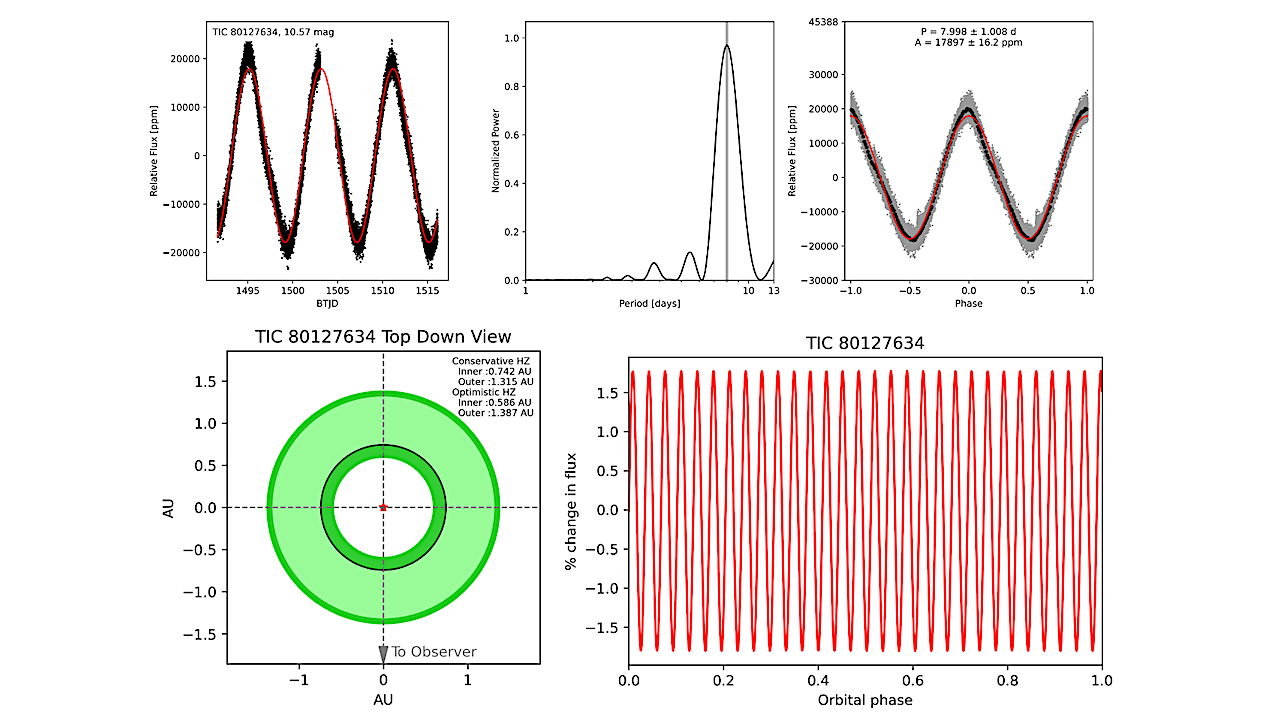
Top: Same as Figure 3, but for TIC 80127634, which is a G star that exhibits high amplitude variations that is used for the water loss simulations. Left: Orbit architecture of a hypothetical Earth-like planet in a circular orbit within the HZ of TIC 80127634. The black circle shows the simulated planet orbit. The light shaded region shows the CHZ and the dark shaded region shows the larger bounds of the OHZ. Right: Percent change in the incident flux received by the hypothetical Earth-like planet. — astro-ph.EP
Planetary atmospheric energy budgets primarily depend on stellar incident flux. However, stellar variability can have major consequences for the evolution of planetary climates.
In this work, we evaluate how stellar variability influences the equilibrium temperature and water retention of planets within the Habitable Zone (HZ). We present a sample of 9 stars that are known to host at least one planet within the HZ and that were identified to have a variability amplitude exceeding 100 ppm based on photometry from the Transiting Exoplanet Survey Satellite (TESS).
We investigate the effect that the variability of these stars have on the insolation flux of their HZ planets and the resulting changes in the induced planetary equilibrium temperature. Our results show that for the stars in our sample, the stellar variability has an insignificant effect on the equilibrium temperature of HZ planets.
However, we also emphasize that these stars are not representative of more extreme variable stars, since exoplanets are more difficult to detect and characterize in the presence of extreme variability. We also investigate the equilibrium temperature and long-term evolution of a hypothetical Earth-like planet placed at the inner edge of the HZ around a highly variable star.
We found that the water loss rates are comparable between both variable and quiet host stars for Earth-like planets in the inner HZ. Overall, these results broaden our knowledge on the impact of stellar variability on planetary habitability.
IMAGE
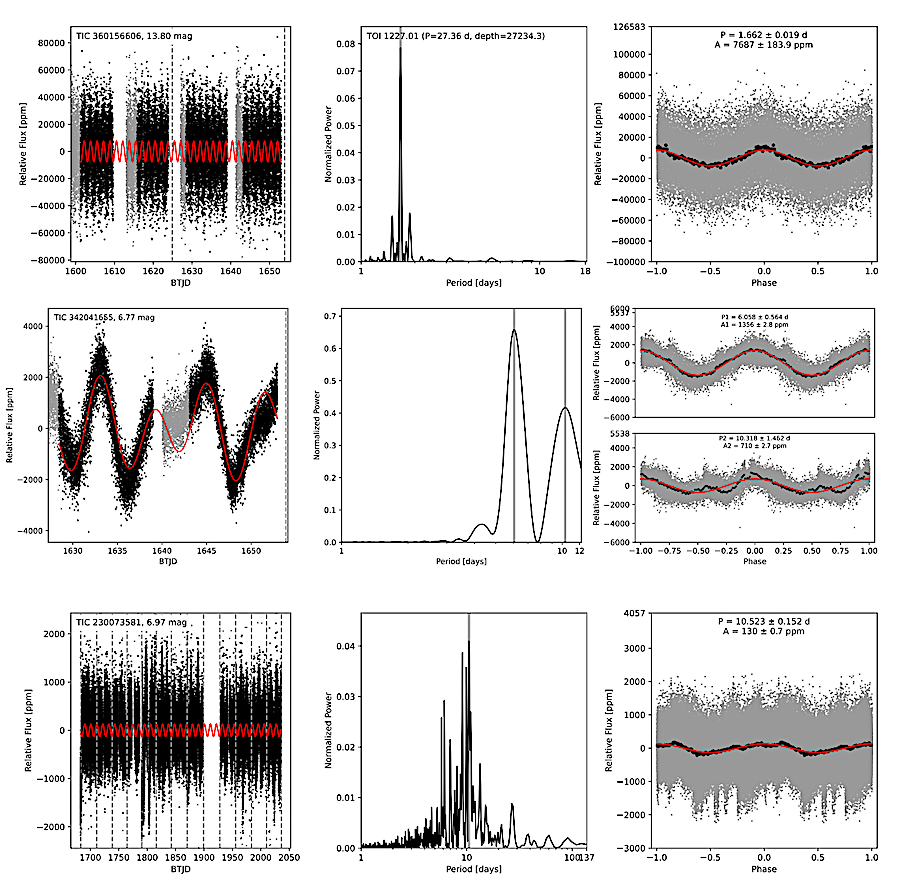
TESS light curves (left column), Lomb-Scargle periodograms (center column), and phase-folded light curves (right column) for TOI-1227 (TIC 360156606; top row), HD 142415 (TIC 342041655; center row), and HD 147379 (TIC 230073581; bottom row). The red curves represent sinusoidal fits to the observed light curves. The dashed gray vertical lines separate individual TESS sectors, and the solid gray vertical lines indicate the selected period from the periodogram. The gray data points in the left panels are data that were not included in the variability analysis. The right panels show all TESS data in gray, and the binned data as black points. — astro-ph.EP
Tara Fetherolf, Sadie G. Welter, Colby M. Ostberg, Stephen R. Kane, Rory Barnes, Emilie R. Simpson
Comments: 15 pages, 8 figures, accepted for publication in The Astronomical Journal
Subjects: Earth and Planetary Astrophysics (astro-ph.EP); Solar and Stellar Astrophysics (astro-ph.SR)
Cite as: arXiv:2511.19646 [astro-ph.EP] (or arXiv:2511.19646v1 [astro-ph.EP] for this version)
https://doi.org/10.48550/arXiv.2511.19646
Focus to learn more
Submission history
From: Tara Fetherolf
[v1] Mon, 24 Nov 2025 19:21:39 UTC (1,910 KB)
https://arxiv.org/abs/2511.19646
Astrobiology
Stay Informed With the Latest & Most Important News
-
 012024 in Review: Highlights from NASA in Silicon Valley
012024 in Review: Highlights from NASA in Silicon Valley -
 02Panasonic Leica Summilux DG 15mm f/1.7 ASPH review
02Panasonic Leica Summilux DG 15mm f/1.7 ASPH review -
 03How New NASA, India Earth Satellite NISAR Will See Earth
03How New NASA, India Earth Satellite NISAR Will See Earth -
 04And Thus Begins A New Year For Life On Earth
04And Thus Begins A New Year For Life On Earth -
 05Astronomy Activation Ambassadors: A New Era
05Astronomy Activation Ambassadors: A New Era -
06SpaceX launch surge helps set new global launch record in 2024
-
 07Space Force plans new ‘Futures Command’ amid pressure to speed up modernization
07Space Force plans new ‘Futures Command’ amid pressure to speed up modernization














